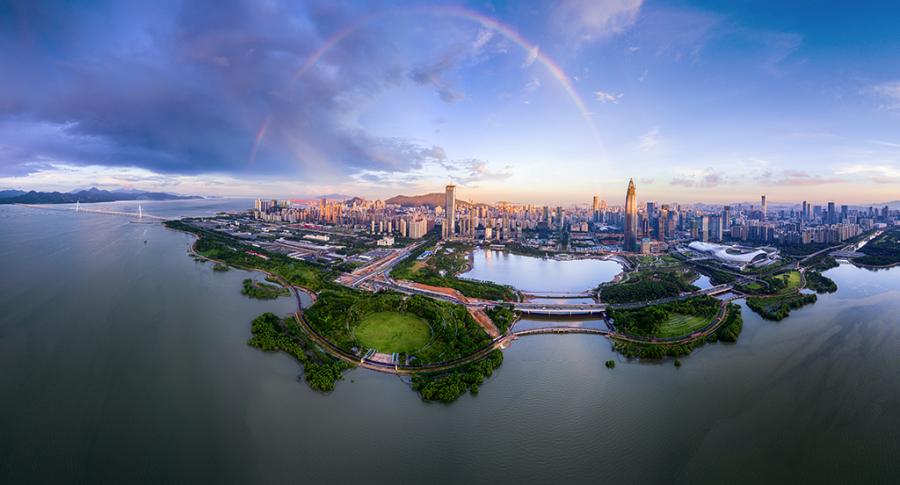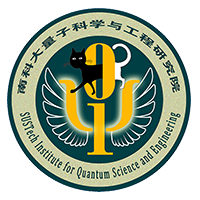about shenzhen
Shenzhen is a coastal city in South China. It is located on a southern tip of the Chinese mainland and on the eastern bank of the Pearl River, neighboring Hong Kong. The country's first special economic zone - the brainchild of late Chinese leader Deng Xiaoping - was established here in 1980. Shenzhen has been a touchstone for China's reform and opening-up policy since then. In merely 37 years, Shenzhen, once a tiny border town of just over 30,000 people, has grown into a modern metropolis. It established many firsts in the history of world industrialization, urbanization and modernization and has become a prosperous, chic, innovative, harmonious and beautiful city.

The city is also well-known for design, with more than 6,000 design companies employing more than 60,000 people.
Shenzhen has unique cultural charm. Since 2003, when Shenzhen took the national lead in establishing the strategy for a culture-based city. In 2015, Shenzhen started to carry out the Cultural Innovative Development 2020 Plan and made an effort to support original design and the development of cultural creative industries.
Shenzhen has a network of first-class public cultural facilities that allows residents to enjoy thousands of cultural performances. It also has a beautiful natural environment, year-round blue sky, a deep-rooted volunteer culture. It has been called as the heaven for entrepreneurship and makers and a "city with no winter." It was elected one of the top 10 Chinese cities popular with expats in 2016.
Shenzhen will strive to achieve bigger goals by continuing to adopt Shenzhen Quality and Shenzhen Standards, aiming at world first-class standards. It will strive to build itself into a beautiful city where people can live happily and make dreams come true.
The development of Shenzhen, China's gateway to the outside world, is regarded as the epitome of the country's drive toward reform and modernization.
GEOGRAPHIC LOCATION
Shenzhen is a coastal city in South China, adjoining Hong Kong. Its longitude lies between 113.46 and 114.37 degrees east, and its latitude between 22.24 and 22.52 degrees north. Sitting south of the Tropic of Cancer, it is in southern Guangdong Province. Demarcated from Hong Kong by the Shenzhen River in the south, it is bordered by Dongguan and Huizhou in the north, Daya Bay and Dapeng Bay in the east and the Lingding Sea and the mouth of the Pearl River in the west.
NATURAL RESOURCES
The total area of Shenzhen is 1,997.27 square kilometers. Shenzhen has more than 310 rivers and streams, which are associated with the nine hydrographic systems. By the end of 2016, there were 168 reservoirs in Shenzhen, storing a total volume of 776 million cubic meters. Shenzhen Reservoir in the east has a total volume of 44.96 million cubic meters, and is the main water source for Shenzhen and Hong Kong.
Shenzhen has a vast sea area, covering 1,145 square kilometers and boasting 260 kilometers of coastline and typical subtropical monsoon climate and vegetation. The city also has rich natural attractions, including popular beaches such as Dameisha, Xiaomeisha, Xichong, Dapeng Peninsula National Geopark and nature reserves like the Mangrove Nature Reserve, Wutong Mountain and Inner Lingding Island.
HISTORY
The earliest-known records bearing the name "Shenzhen" date from 1410, during the Ming Dynasty (1368-1644). Shenzhen became a township at the beginning of the Qing Dynasty (1644-1911). Local people called the drains in paddy fields "zhen" or "chong." Shenzhen literally means "deep drains" because the area used to be crisscrossed by rivers and streams - and still is, today - with deep drains in the paddy fields. Shenzhen is also known as "Roc City" because maps of the city's outline resemble a flying roc with its wings spread.
The city of Shenzhen was established in 1979. In August of the following year, the country's first special economic zone was established here.
Human activity in the area dates back more than 6,700 years. The area was founded as a county 1,700 years ago and is home to 600-year-old cultural relics such as Nantou Ancient City and Dapeng Fortress. The Hakka people migrated to the area from central China about 300 years ago.
ADMINISTRATIVE DIVISIONS
Shenzhen is a sub-provincial city. It has direct jurisdiction over eight districts and two new areas: Luohu, Futian, Nanshan, Yantian, Bao'an, Longgang, Longhua and Pingshan districts, and Guangming and Dapeng new areas. The Central Government expanded the special economic zone to cover the whole city on July 1, 2010.
DEMOGRAPHICS
There has been migration to southern Guangdong and what is now Shenzhen since the late Southern Song Dynasty (1127-1279), but the population increased dramatically after the city of Shenzhen was established. By the end of 2016, the permanent resident population reached 11,908,400, of which 3,845,200 had permanent hukou.
AVERAGE INCOME
The annual average salary paid to Shenzhen workers was 48,695 yuan in 2016, up 6.5% from the previous year.
CONSUMPTION
The per capita annual living expenditure in 2016 was 36,480.61 yuan, up 10.1% from the previous year. The Engel coefficient, or proportion of income spent on food, was 30.5% for urban residents.
MIGRANT CULTURE
As a city of migrants, Shenzhen is open-minded, tolerant and innovative. It is an ideal place for domestic and international talent to start businesses. It has been voted as China's Most Dynamic City and City Most Favored by Migrant Workers.
LANGUAGES
Shenzhen is the only city in Guangdong where Mandarin is the dominant language, because of its huge migrant population from all over China. Many public service employees, professionals and businesspeople speak English too. Most of the young people speak English and Cantonese. The Shenzhen Speaks Foreign Languages campaign is conducted across the city to encourage more residents and government employees to learn to speak foreign languages.
CLIMATE
Shenzhen has a subtropical monsoon climate. The weather is generally temperate to mild, with plenty of rain and sunshine. The annual average temperature is 22.4 degrees Celsius. A total of 355 days a year are frost-free. The yearly rainfall totals 1,933.3 millimeters and the average annual number of hours of sunshine is 2,120.5.
OFFICIAL TREES AND FLOWER
The litchi and mangrove trees are Shenzhen's official trees and bougainvillea is the official flower.
SAFETY AND SECURITY
In 2016, the rate of citizens calling emergency hotline 110 decreased by 25.3% and the detection rate increased by 10.7%, compared with 2015. According to a third-party poll, Shenzhen citizens rated the city's safety 80.9 points and the satisfaction poll won 79.5 points, the highest scores in recent years.
GOVERNMENT MANAGEMENT
The government of Shenzhen has actively driven its own transformation of functions and strengthened the construction of a service-oriented government. Under the guidance of the motto "legal, responsible, shinning and efficient government", the government has improved itself in its administrative transparency and managing efficiency, in order to provide a fair, clear, efficient and law-governed environment for the progress of the society and the welfare of the citizens.
ECONOMIC GROWTH
In 2016, Shenzhen's economy maintained a healthy momentum of growth. GDP grew by 9% to 1.95 trillion yuan.
Its total retail sales of consumer goods increased by 8.1% to 551.28 billion yuan. Foreign trade volume increased to US$398.44 billion. Export and import volume has stayed at the top of the nation's large and medium-sized cities for the 24th consecutive year.
ECONOMIC POWER
Shenzhen is fourth on the Chinese mainland in terms of economic power and is one of the country's top cities for economic returns.
FISCAL REVENUE
Shenzhen reported 313.64 billion yuan in local revenue in 2016, up 15% from a year before. The public budget expenditure in 2016 was 417.8 billion yuan, up 18.6% from the previous year.
ECONOMIC STATUS
Shenzhen is a link between the Chinese mainland and Hong Kong and a transport hub for coastal southern China. The city leads in high-tech development, financial services, foreign trade, shipping, and creative and cultural industries. It has undertaken a mission to pilot China's structural reform and continuous opening up to the outside world.
INDUSTRIAL STRUCTURE
Shenzhen has three main industries, namely, emerging industry, advanced manufacturing industry and modern service industry. The emerging industry contributes about 53% of the GDP growth, the advanced manufacturing industry occupies 75% of the industrial sector, and the modern service industry accounts for 70% of the service industry. The added value of the financial industry increased by 14.6%. A total of 13 new licensed financial institutions, including E.Sun Bank, settled in the city.
DEVELOPMENT GOAL
Shenzhen was designated as a national pilot city for comprehensive reform. Its goals are to build a national economic center, a national innovative city, a socialist model city with Chinese characteristics and an international city.
source: Shenzhen Government Online



